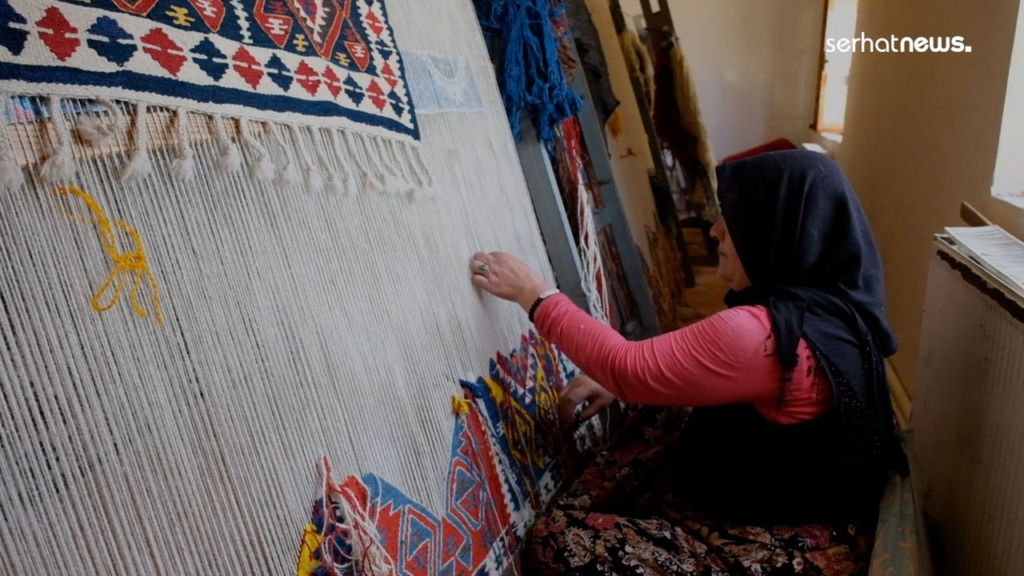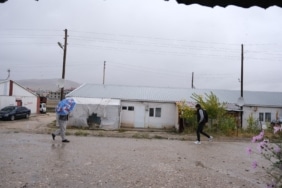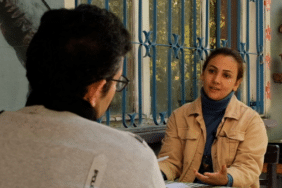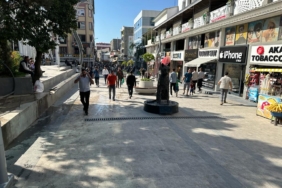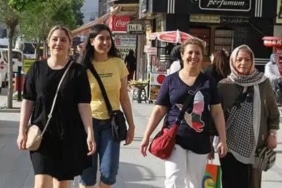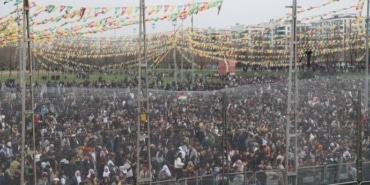The rug workshop, which has been going on in Van since 1996, is one of the last rug workshops to resist technology. Nearly 450 women weaved rugs in the workshop established under the Turkish Education Culture and Social Service Foundation.
Approximately 450 women weaved rugs as trainees in the rug workshop established by the Turkish Education Culture and Social Service Foundation in the Bostaniçi District of İpekyolu. Founded in Ankara in 1992, the headquarters of the foundation moved to Van in 2014. Tayyip Kızılyıldız, the Director of the Foundation, says that the rug workshop has been continuing since 1996.
The Director of the Education Culture and Social Service Foundation of Turkey, Tayyip Kızılyıldız, says that their aim in establishing the rug workshop in Van and in the Bostaniçi District is to ensure that the motifs of the rugs are kept alive and that they have an important cultural value. “We aim to continue this work in its original form without disturbing the motifs as much as possible,” says Kızılyıldız.
‘Employment for immigrants’
Kızılızdız said, “The reason we opened the rug workshop in this region is because the citizens who had to evacuate their villages as a result of the low-intensity war in the country settled here. In this sense, Van is one of the places that receive a lot of immigration. We also established this workshop to create employment for those who settled here due to migration,” he says.
Stating that there are more than 450 women who have taken courses in the workshop and learned how to weave rugs, Kızılyıldız said, “These women learned rug weaving by taking a course here for the first time. In addition, women over the age of 50 in the neighborhood come here to weave the rug motifs of their own region in our workshop because they know how to weave. We also help them at the point of sale,” he says.
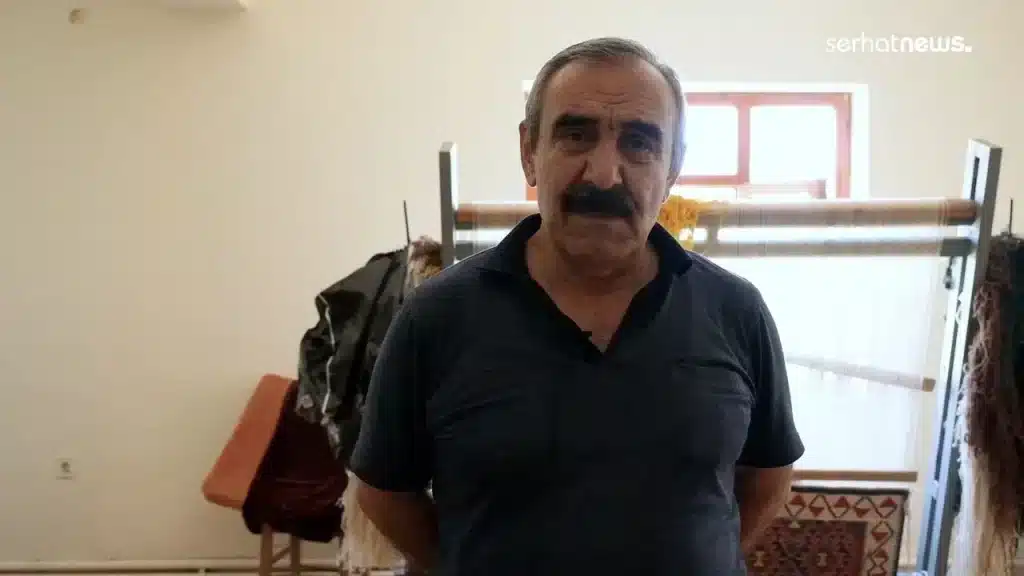
Kızılyıldız states that the motifs woven in her workshops are unique to the Hakkari-Van region and lists the motifs as follows: “There are many rich motifs such as luleper, roses, kesneker, canbezar, schemari, shinkubik, and chilgul.”
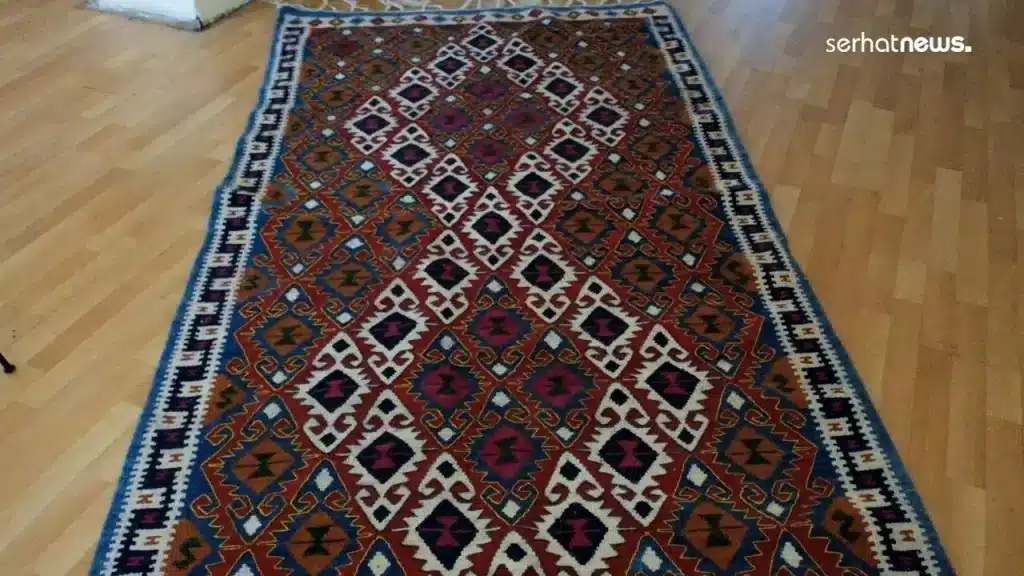
‘A very demanding job’
Kumru Kaval, who is almost the oldest trainee of the workshop, says that she has been weaving rugs for 30 years. Kaval, who met rugs in his childhood, says with a smile that she has taken the troubles of weaving.
Saying that she raises all her children with the rugs she weaves, Kaval says, “Our whole life is based on these rugs. We still make our living from these rugs. It was fine before, but we can’t get along anymore. When I finished a rug, I could buy 3-4 bags of flour with its income, I could buy oil, sugar, I could buy many supplies for the house, now I can’t buy anything. 2 bags of flour are not worth the money now, a rug. I have to come and do it. There are not many rug sales like in the past. If the sales were high, we could still make a living,” she also touches on the effects of the economy.
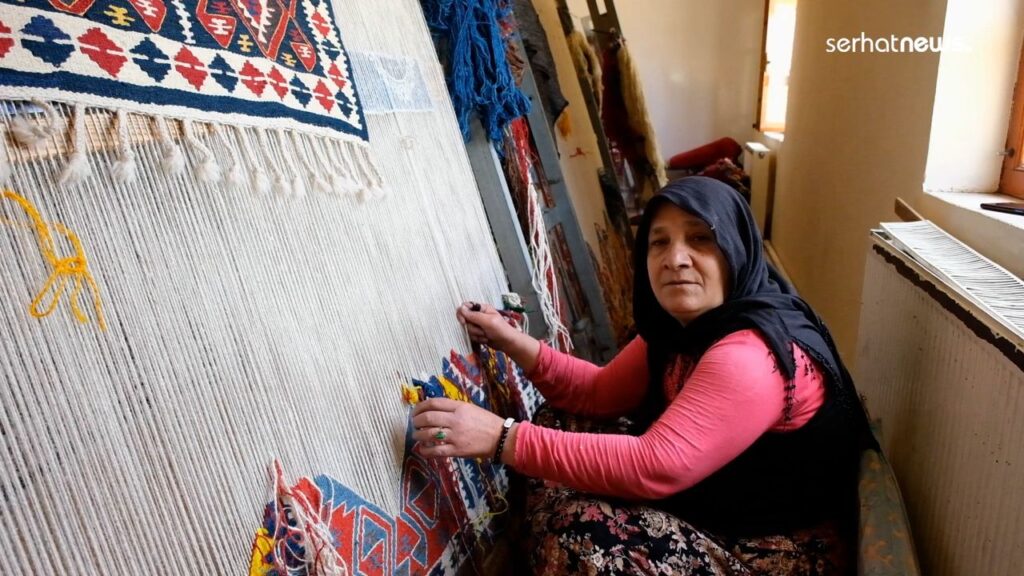
“It is a very demanding job. We knit loops with fingers. That’s a lot of pain,” says Kaval, adding that she is the fastest rug weaver in the workshop. She explains the reason for this as follows: “I have no work at home, I come here as soon as I get up because I have a bride. But some of the other women have children, they have responsibilities at home, so they finish late. Some do not even finish in two years. I can also finish one rug in a month.”
‘I started weaving rugs when I was a child’
Kaval says that when she was in the village, she used to weave rugs with her mother and sister-in-law, and that she met the rug loom at a very young age. She says that they first spin the ropes of the rugs they weave in the village, and then they obtain madder with the plants they collect, and much more vivid colors emerge.
Stating that the weaving looms they used in the village were different from the ones they are using now, Kaval said, “We had looms that we called ‘chardar’ that we laid on the ground. I wouldn’t give up if I intervened and weaved wrongly,” she says with a smile.
Kaval, who weaves a looper pattern on the weaving loom, says that she can weave any pattern other than that. Saying that she loves weaving rugs, Kaval states that she likes handicraft work and that she forgets her troubles while weaving rugs. “Kilim takes away people’s troubles,” says Kaval.
‘We forget our troubles’
Hacer Baysal is another woman weaving rugs in the workshop. When we approach the loom, she both weaves her rug and starts chatting with us. Baysal says she started this course 8 years ago. The sound of ‘kirkit’ mixes between Baysal’s sentences. Saying that she didn’t know anything about rugs when she first came to the course, Baysal says she learned how to weave thanks to the course instructor
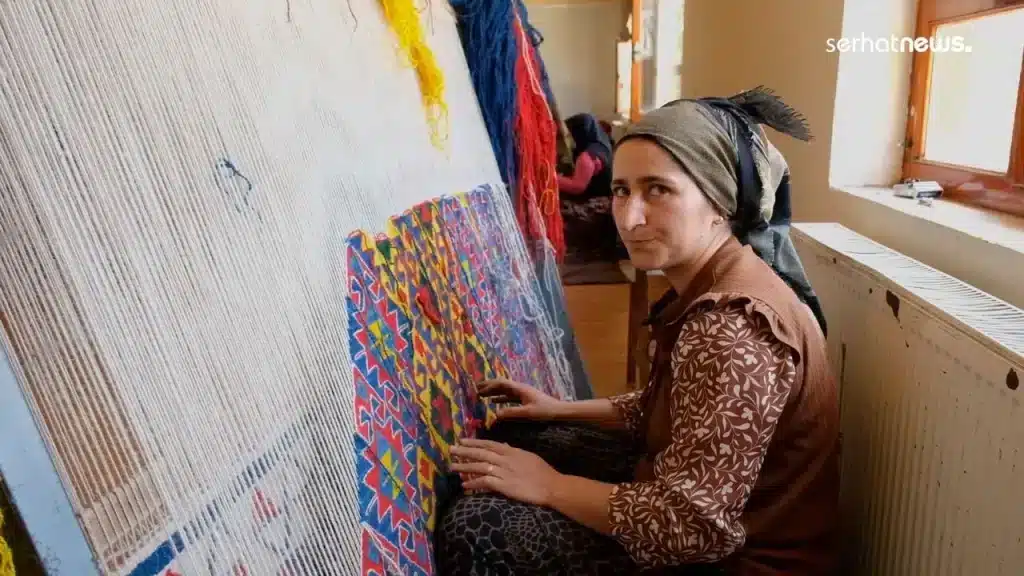
Baysal touched the pattern standing on the loom with her fingertips and said, “The pattern I’m working on is ‘gülsarya’. There are many patterns. Anyone can make any pattern they want. Whichever pattern comes easily to whomever…” she says.
Stating that the job has fun aspects as well as difficulties, Baysal said, “We women do not sit at home and get bored. We come here to work and chat. We forget our troubles,” she says.
Stating that the earnings of the women who come and work constantly are good, Baysal adds that the time of the course is left to them, but when it does not come regularly, the time to finish a rug is longer.
Hand-woven rugs succumb to technology
Nuran Karakurt has been teaching at the kilim course since 2015. Karakurt states that when they first started this course, they mostly weaved rugs in small sizes, and they weaved local rugs and bags to export abroad. Karakurt says that after that, the demand increased, so they turned to rugs. She states that after a period of intensity, there was a decrease in the number of students with the decrease in demand.
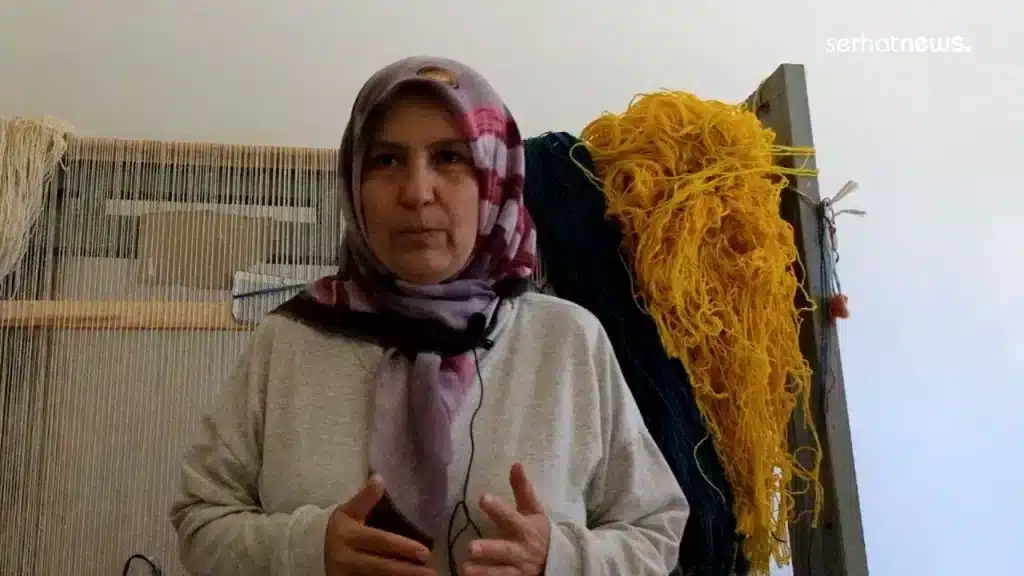
Karakurt states that hand-woven rugs have succumbed to technology and says, “With technology, more machine-made rugs and rugs have been used more and more.”
Karakurt said, “We are trying to work as much as we can here. I had many students. Since it is summer now, students are going to garden work. There are more students in the winter. We have good communication with people here. We became like a family in 8 years,” she says.
‘Women contribute to the household economy’
Stating that the foundation’s income is only for woven rugs, and that women only use it as a kitchen expense, Karakurt said, “Most of them’ husbands do not work. They get a small amount from here, and how much is enough is debatable. Such professions should be supported by the state in order to pass them on to future generations. Because unfortunately my student average age is 40 and above. The new generation does not want to do this. It is both a difficult art and less rewarding. We can say that it is on the verge of being forgotten,” she says.
Expressing that she is trying to continue this art a little longer, Karakurt adds that she does not know how long she can continue.
Karakurt summarizes the emotion reflected by the rug with a quote from Enver Özkahraman: “Rug is the silent scream of women.”
Serhat News
Translator: Akif Coşkun

